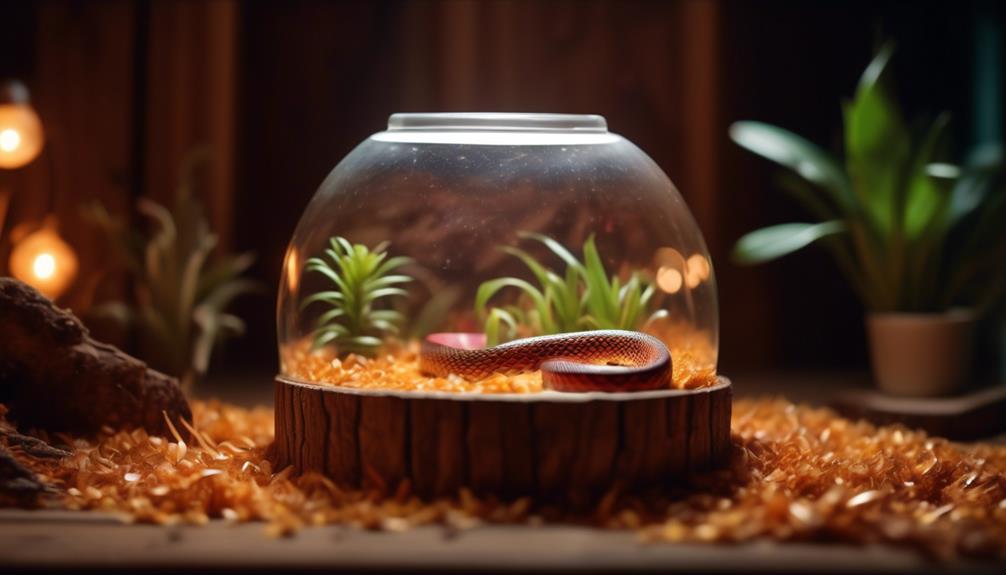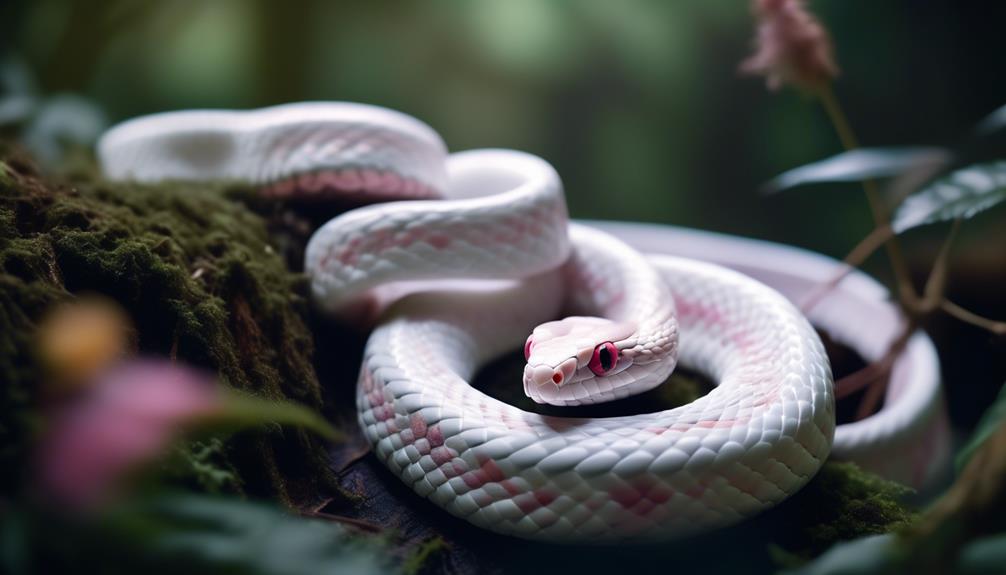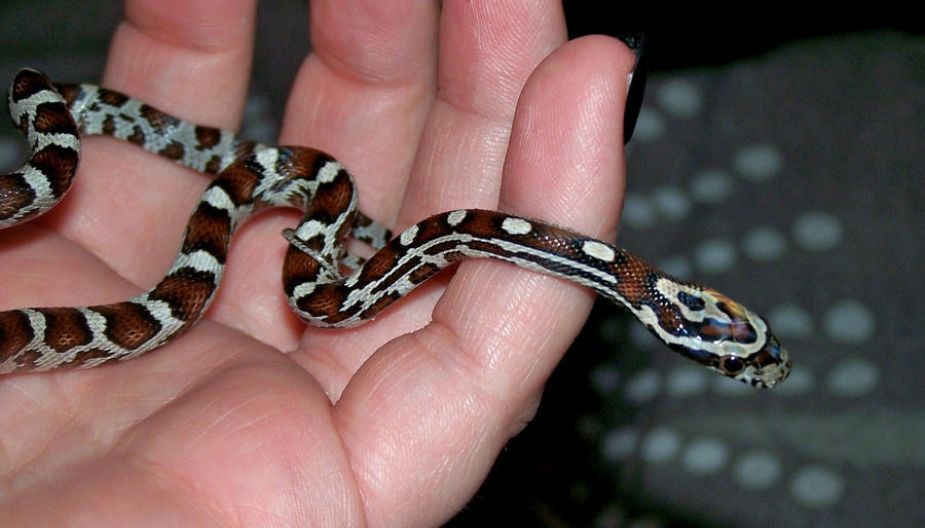You may not be aware that corn snakes are one of the most popular pet snakes in the United States, known for their docile nature and low maintenance requirements. If you’re considering adding one to your household, there are a few key elements to consider.
From selecting the right type of corn snake to creating a suitable habitat and understanding their feeding habits, there’s a lot to learn to ensure a happy and healthy pet.
Whether you’re a first-time reptile owner or looking to expand your collection, this beginner’s guide will provide you with essential knowledge to set you on the right path to successful corn snake ownership.
Choosing the Right Corn Snake
When selecting a corn snake, consider factors such as size, coloration, and temperament to ensure you find the right fit for your preferences and experience level.
Size is an important consideration as corn snakes can vary significantly in length, ranging from 3 to 5 feet, with females generally being larger than males.
The color variations in corn snakes are vast, with morphs such as the classic ‘red rat’ and ‘amelanistic’ being popular choices. These variations can affect the snake’s appearance and value.
Temperament is crucial, especially for first-time owners. Consider whether you want a snake that’s more docile or one that’s more active.
Breeding considerations are also important. If you’re interested in breeding, you may want to look for certain genetic traits or specific morphs. It’s essential to research and understand the genetics of the snakes you choose for breeding to achieve the desired offspring.
Considering these factors will ensure that you find a corn snake that fits your preferences and experience level.
Setting Up the Perfect Habitat
After selecting the right corn snake based on factors like size, coloration, and temperament, it’s crucial to create the perfect habitat to ensure the snake’s well-being and comfort. Corn snakes are ectothermic, meaning they rely on external sources to regulate their body temperature. Therefore, maintaining the ideal temperature gradient in the habitat is crucial for their health. Here’s a detailed guide to setting up the perfect habitat for your corn snake:
Corn Snake Habitat Setup
| Aspect | Details |
|---|---|
| Enclosure | 20-gallon tank for juveniles, 40-gallon for adults |
| Substrate | Aspen shavings or cypress mulch |
| Temperature | 75-85°F (cool side), 85-90°F (warm side) |
| Lighting | Day and night cycle, UVB light not necessary |
Decorative Elements
To ensure the snake feels secure and has opportunities for natural behaviors, include hiding spots, climbing branches, and a shallow water dish. Additionally, artificial plants and rocks will create a visually appealing environment. Remember to use non-toxic materials and avoid overcrowding the habitat.
Understanding Corn Snake Feeding
To ensure the optimal health and growth of your corn snake, it’s essential to understand its dietary requirements and feeding habits. When it comes to feeding your corn snake, it’s important to consider the following:
- Feeding Schedule: Corn snakes are typically fed every 5-7 days, with adult snakes being fed less frequently than juveniles. Establishing a consistent feeding schedule is crucial for their well-being and growth.
- Prey Size: The size of the prey should be appropriate for the snake’s age and size. A good rule of thumb is to offer prey that’s about the same width as the snake’s widest part. This ensures that the snake can consume its meal comfortably without causing any digestive issues.
Corn snakes are known for their hunting instincts and feeding behavior. They’re primarily rodent eaters and are skilled hunters. When feeding, they use constriction to subdue their prey before consuming it. Understanding their natural feeding behavior is important for providing a suitable feeding environment and ensuring that they’re receiving the necessary nutrients for their well-being.
Handling and Taming Your Corn Snake
Handling and taming your corn snake requires patience, consistency, and a gentle approach to build trust and acclimate the snake to human interaction. Behavior training and socialization are essential for your snake to become comfortable with being handled.
Start by allowing your snake to become accustomed to your presence by spending time near the enclosure. Once your snake seems relaxed, you can begin bonding exercises and trust-building activities.
When handling your snake, approach it calmly and avoid sudden movements. Gently scoop up the snake, supporting its body to make it feel secure. Initially, limit handling sessions to 5-10 minutes to avoid overwhelming your snake. Gradually increase the duration as your snake becomes more comfortable.
It’s important to handle your snake regularly to maintain the bond and help it become accustomed to human interaction. Always wash your hands before and after handling your snake to avoid transferring any harmful bacteria.
With consistent and gentle interaction, your corn snake will become more comfortable with being handled and develop a trusting bond with you.
Health and Care Essentials for Corn Snakes
As you ensure the health and well-being of your corn snake, it’s imperative to understand the essential care requirements and potential health issues specific to this species. Corn snakes, like all reptiles, require specific care to thrive in captivity.
Here are some health and care essentials to keep in mind:
- Proper Handling Techniques
When handling your corn snake, it’s crucial to support its body properly and avoid sudden movements. This helps prevent stress and potential injuries to the snake. Always wash your hands before and after handling your snake to prevent the spread of bacteria and diseases.
- Common Health Issues
Respiratory infections and mouth rot are common health issues in corn snakes, often caused by incorrect temperature or humidity levels in their enclosure. Parasites such as mites can also affect corn snakes. Regularly inspect your snake for any signs of mites, such as tiny black or red spots, and consult a veterinarian if needed.
Proper care and attention to these aspects of your corn snake’s health will help ensure a long and happy life for your pet.
Conclusion
In conclusion, owning a corn snake can be a rewarding experience for beginners. By choosing the right snake, setting up the perfect habitat, understanding feeding habits, and handling with care, you can ensure a healthy and happy pet.
Remember to provide a safe and comfortable environment for your corn snake, and you’ll be rewarded with a fascinating and low-maintenance companion for years to come. Enjoy the beauty of watching your corn snake thrive in its natural habitat within your home.


